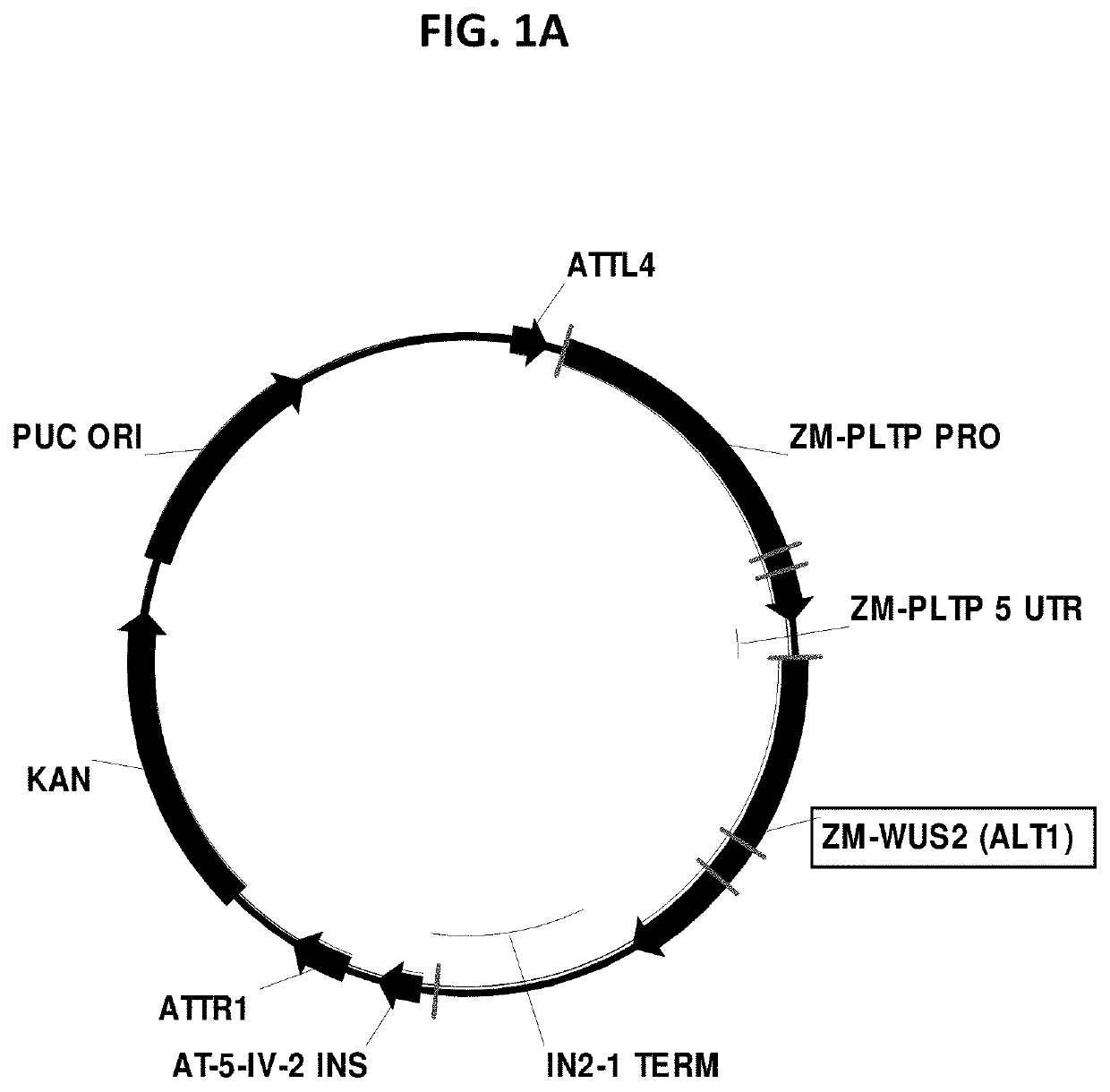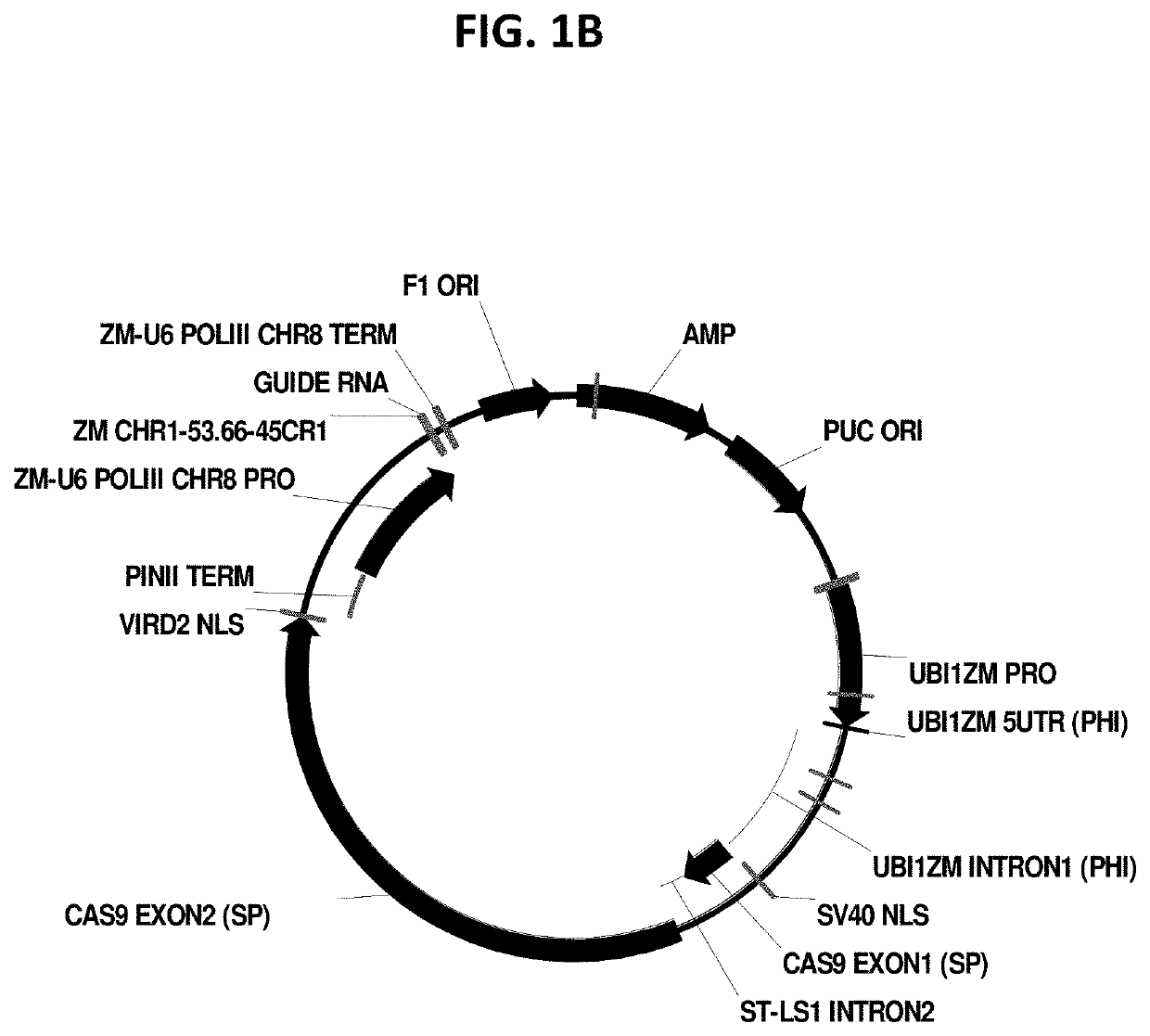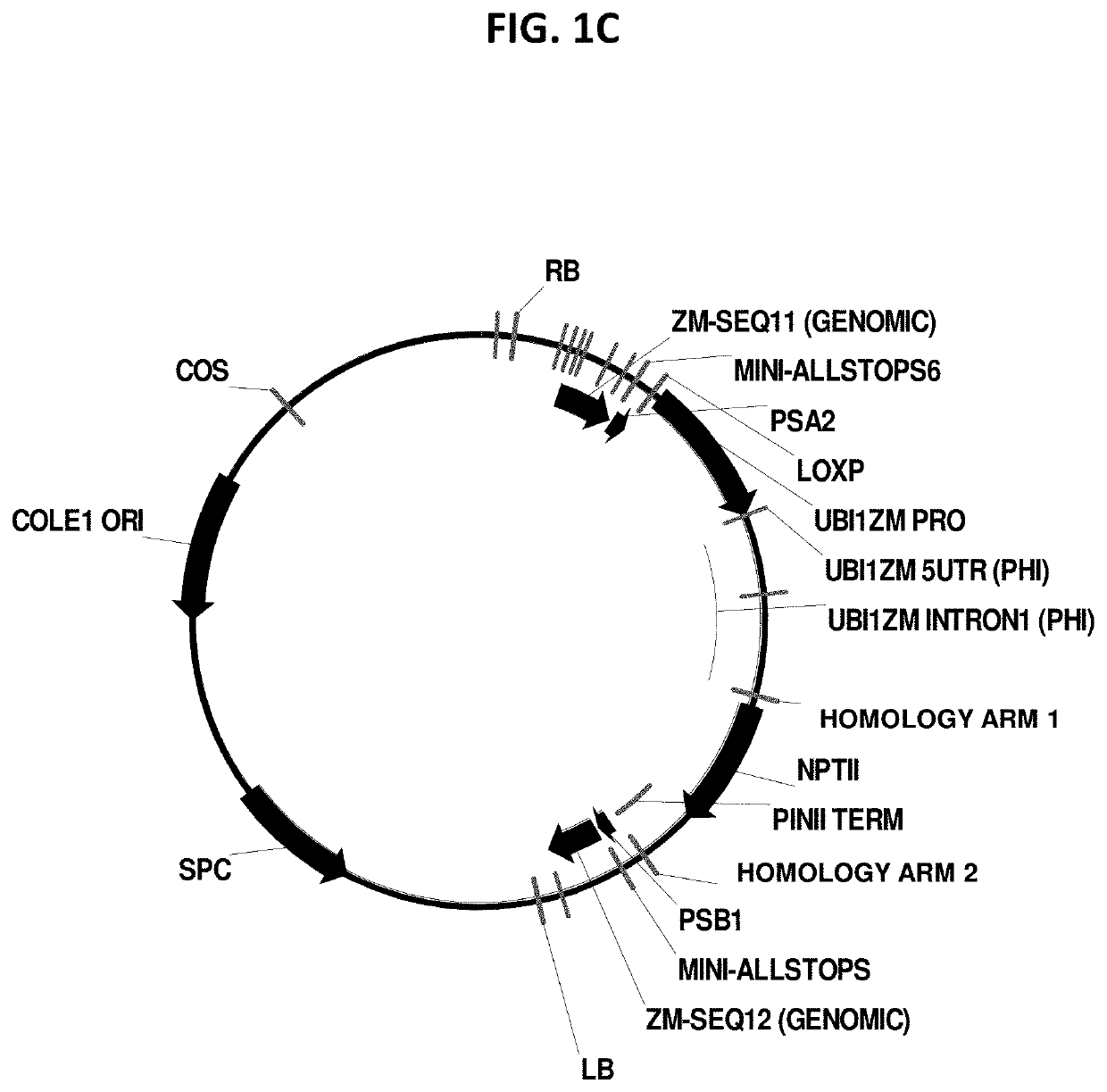Use of morphogenic factors for the improvement of gene editing
a technology of morphogenic factors and gene editing, applied in the field of plant molecular biology, can solve the problems of limiting speed and efficiency, affecting product development timelines, delay in plant creation and testing, etc., and achieves improved nitrogen fixation, improved water use efficiency, and improved nitrogen utilization.
- Summary
- Abstract
- Description
- Claims
- Application Information
AI Technical Summary
Benefits of technology
Problems solved by technology
Method used
Image
Examples
example 1
Bombardment Transformation of Corn Plants
[0340]In this example, transformation of immature maize embryos via particle bombardment is described. It is understood that a similar protocol may be used for the transformation of other plants, such as (but not limited to): soybean, cotton, canola, wheat, rice, Sorghum, or sunflower.
[0341]Prior to bombardment, 10-12 DAP immature embryos are isolated from ears of a corn plant and placed on culture medium plus 16% sucrose for three hours to plasmolyze the scutellar cells.
[0342]Single plasmids or multiple plasmids may be used for each particle bombardment. In one example, a plurality of plasmids include: 1) a plasmid comprising a donor cassette, 2) a plasmid comprising an expression cassette for the double-strand-break-inducing agent, and 3) a plasmid comprising an expression cassette for the morphogenic factor.
[0343]To attach the DNA to 0.6 μm gold particles, the plasmids are mixed by adding 10 μl of each plasmid together in a low-binding mic...
example 3
of a Morphogenic Factor to an Adjacent Cell Improves CRISPR-Cas Mediated Polynucleotide Modification of Target Cells
[0352]This example demonstrates that delivery of DNA vector encoding for WUS protein on a separate set of gold particles into maize immature embryo cells is sufficient to support embryogenesis and plant regeneration with targeted mutations / deletions or site-specific insertions and no WUS gene integration with practical frequencies.
[0353]Previously, plant transformation and genome editing approaches required delivery of various DNA vectors coding for different “helper” components, including double-strand break reagents (for example, meganucleases, ZFNs, TALENs, or Cas9 nuclease and guide RNA (gRNA)), a selectable marker, morphogenic factors (e.g., ODP2 and WUS), in addition to the “donor” DNA—single-stranded or double-stranded oligonucleotides in gene editing experiments or plasmid DNA containing parts or entire genes with regulatory elements (promoters and terminators)...
example 4
n of Endogenous Morphogenic Factors Improves CRISPR-Cas Mediated Polynucleotide Modification of Target Cells
[0364]In this example, a method is provided for enabling plant transformation using the targeted overexpression of a developmental gene using an RNA programmable homing endonuclease-transcriptional activator complex. The basic platform this is built upon is the CRISPR / Cas9 system (specifically S. pyogenes, abbreviated Spy Cas9) which is capable of being directed to any target sequence with the modifications of removing its endonuclease activity and combining it with a known transcriptional activator motif. In this case, the D10A and H840A mutations in Spy Cas9 were made (polynucleotide SEQID NO:105 encoding polypeptide SEQID NO:110) and the transcriptional activator component of Arabidopsis CBF1 protein (referred to as AT-CBF1A, polynucleotide SEQID NO:83 encoding polypeptide SEQID NO:101) was fused. This method is a novel advancement to the method of plant transformation and ...
PUM
| Property | Measurement | Unit |
|---|---|---|
| Composition | aaaaa | aaaaa |
Abstract
Description
Claims
Application Information
 Login to View More
Login to View More - R&D
- Intellectual Property
- Life Sciences
- Materials
- Tech Scout
- Unparalleled Data Quality
- Higher Quality Content
- 60% Fewer Hallucinations
Browse by: Latest US Patents, China's latest patents, Technical Efficacy Thesaurus, Application Domain, Technology Topic, Popular Technical Reports.
© 2025 PatSnap. All rights reserved.Legal|Privacy policy|Modern Slavery Act Transparency Statement|Sitemap|About US| Contact US: help@patsnap.com



